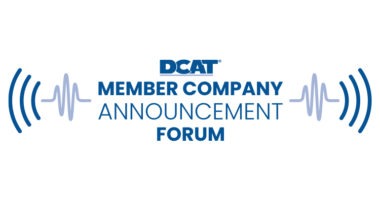Beyond Brazil: Latin America Pharmaceutical Manufacturing Continues to Expand
As pharmaceutical and biopharmaceutical companies expand their product positions in emerging markets, they need to evaluate manufacturing opportunities with local or regional players as well as consider potential sourcing opportunities from these markets. Much attention has been focused on the BRIC (Brazil, Russia, India, and China) countries, but what is the state of active pharmaceutical ingredient (API) manufacturing outside the BRIC countries? As part of a two-part series on API manufacturing beyond BRIC, Emily Kimball, Pharmaceutical Research Analyst, Thomson Reuters, first examines the current and future direction of Latin America’s API manufacturing industry.
BRIC (Brazil, Russia, India, and China) countries continue to be areas of great interest and investment for pharmaceutical companies. However, rising manufacturing costs and the need for greater global expansion are driving corporations to look beyond BRIC. With this in mind, Latin America’s tightening regulatory oversight and strengthening infrastructure helps this region to continue to be an important area for pharmaceutical companies seeking to expand portfolios and source lower-cost active pharmaceutical ingredients (APIs). Furthermore, Latin American companies are expanding their presence in global markets by investing in domestic specialty manufacturing capabilities and forming a growing number of partnerships worldwide. Although Brazil dominates this region in both population and market size, countries, such as Mexico and Argentina, provide ample opportunities for API sourcing and finished dose products alike.
 |
| Emily Kimball
Pharmaceutical Research
Analyst Thomson Reuters
|
Mexico
Mexico offers the second largest pharmaceutical market in Latin America, with 120 million people and a market worth more than $13 billion. Although Mexico has long been a location where multinational corporations have had production sites, it has become a sourcing destination unto its own with domestic companies looking to manufacture and sell complex, specially manufactured products. According to figures from Mexico’s National Association of Drug Manufacturers (ANAFAM), 86% of drugs used in Mexico are produced internally. In addition to offering these products domestically as a means to help curtail rising healthcare costs, there is a move to offer some of these products in more regulated markets.
Thomson Reuters assesses the capabilities and experience of API manufacturers according to a proprietary scheme based on objective regulatory data. In making that assessment, companies are ranked from those focused on supplying their local market to companies with years of experience supplying highly regulated markets. The majority of Latin American API manufacturers outside of Brazil are located in Argentina and Mexico (see Figure 1). Although the majority of these corporate groups focus on supplying their local markets, a growing number of suppliers have a presence in regulated markets, specifically the United States and the European Union (EU). Under the EU’s Falsified Medicines Directive (FMD), sites supplying APIs for use in the EU need to provide written confirmation from their country’s regulatory authority stating the API is produced at standards equivalent to good manufacturing practices (GMP) found in Europe. Under the FMD, a country may request to be assessed for GMP equivalence. If the European Commission finds a country’s regulatory standards are equivalent to those in the EU, the country will be added to the “white list.” Data collected from the FMD provides insight into Mexico’s API presence in Europe.
| Figure 1: Latin American (Excluding Brazil) Corporate Group Ratings of Active Pharmaceutical Ingredient (API) Manufacturers
|
 |
| Local: companies supplying only to their local and other less-regulated markets.
Potential Future: companies with interest in supplying regulated markets but with limited or no known performance.
Less established: companies with less of a track record in supplying to regulated markets.
Source: Thomson Reuters Newport Premium
|
According to the minutes of the March 26, 2014 meeting of the European Commission’s Pharmaceutical Committee, 35 Mexican sites were supplying APIs to the EU and nine written confirmations (WCs) had been issued at that time (1). With 35 sites, Mexico surpasses Brazil, which tallied 23 sites under the FMD. To facilitate further cooperation with Europe, the Mexican regulatory agency, the Comisión Federal para la Protección contra Riesgos Sanitarios (the Federal Commission for the Protection against Sanitary Risk (COFEPRIS)), has reissued GMP regulations to be more in line with those found in the EU. Mexico also has expressed its intent to apply for inclusion on the list of third countries (i.e., white list) that will not need to submit WCs for EU-imported APIs. If approved, Mexico would join Australia, Japan, Switzerland, and the US on the current white list. Additionally, in 2012, Mexico announced plans to recognize applications for new drugs that have been approved via the centralized procedure in the EU or regulatory authorities in several countries, including the US.
In comparison, under the implementation by the US Food and Drug Administration of the Generic Drug User Fee Act (GDUFA), 12 sites in Mexico had self-identified as API manufacturers for 2014 (2). According to data from Thomson Reuters Newport Premium, 112 Type II drug master files (DMFs) listed Mexico as a manufacturing location. Under GDUFA, DMFs that have satisfied fee obligations are considered to be available for reference. As of June 2014, only 27 DMFs available for reference included Mexican sites (see Figure 2).
| Figure 2: Latin American (Excluding Brazil) Active Pharmaceutical Ingredient (API) Manufacturing in Regulatory Filings
|
 |
| COS are certificates of suitability.
DMFs are drug master files.
GDUFA is the Generic Drug User Fee Act
Source: Thomson Reuters Newport Premium and the US Food and Drug Administration.
|
Argentina
With 43 million people, Argentina trails fellow Latin American countries Brazil, Mexico, and Colombia in population size (3). However, Argentina’s manufacturing capabilties include a number of sites offering specialty APIs, including a rising number of sites with biotechnology capabilities. To help combat the increasing cost of specially manufactured medications, a growing trend of partnering with or transferring technology from companies in other emerging markets has evolved in Latin America. Of particular interest have been deals in biotechnology, which has emerged as a significant growth segment for Latin America. Recent years have seen a number of alliances emerge between Latin American companies. Of note was an announced collaboration in April 2013 between the Brazilian pharmaceutical manufacturer Libbs Farmaceutica and pharmADN, the Argentina-based biotech subsidiary of Chemo’s mAbxience. The deal concerns planned monoclonal antibody technology transfer from pharmADN to Libbs once construction of a new facility is completed in Brazil. It isn’t just companies that are interested in deal-making in Latin America; local governments are also collaborating to promote cooperation across emerging markets. In 2013, officials from the Indian and Argentinian governments entered into a bilateral agreement regarding scientific and technogical advancement. Areas identified as priorities in the agreement include biotechnology and drug discovery.
Although most manufacturing is for domestic use, as of mid-March, FMD data had 12 sites in Argentina supplying APIs to the EU with 12 WCs being issued to cover 46 APIs. Like Mexico, Argentina also plans to request inclusion on the white list. As of the beginning of May 2014, Argentina had five sites that had self-identified as API manufacturers for 2014 under GDUFA and was listed as a manufacturing location on two DMFs available for reference. While Argentina’s API presence is growing in the US, according to IMS data in Thomson Reuters Newport Premium, no Argentinian corporate groups have launched a product on the US market. This may soon change as Eriochem recently announced FDA inspection of its facility in Argentina for two injectable products awaiting approval for the US market (4).
Latin America at large
Argentina, Mexico, and Brazil are not the only countries that have made changes to their domestic markets in recent years. Harmonized GMP certification does not yet exist across the entire region although a number of countries have made changes in their requirements. Several years ago, the Peruvian Ministry of Health (Dirección General de Medicamentos, Insumos y Drogas) (DIGEMID) announced that products imported into the country for domestic use would need GMP certification from Peru or those recognized by DIGEMID. Prior to this change, DIGEMID accepted GMP certfication from the manufacturer’s country of origin. Chile recognizes GMP documentation from a number of European agancies along with those accredited by the Pan American Health Organization (PAHO). In 2013, regulatory authorities in Chile, Mexico, Peru, and Colombia entered into a cooperative agreement to help eliminate regulatory barriers and increase access to medications across their borders. Additional agreements between other countries within the region have been formed in recent years, and there appears to be increasing recognition of requirements from international agencies.
Although Argentina and Mexico are the only countries aside from Brazil to have API sites listed within a DMF available for reference as of June 2014, Chile, Colombia, Peru, and Uruguay have all been included as manufacturing locations in filed US DMFs. To date, no sites in any of these countries have self-identified as API manufacturers under GDUFA. Additionally, Latin American sites are also manufacturing for holders of European certificiates of suitability (COS). Data from Thomson Reuters Newport show 15 sites in Argentina, 3 in Colombia, and 36 in Mexico manufacturing APIs for COS holders.
Looking ahead
Although Latin America boasts growing production of biologics, vaccines, and cytotoxics, as the global pharmaceutical market becomes evermore competive, companies in Latin America will need to continue to increase their specialized manufacturing capabilities. With an increasing number of the top-selling drugs being biologics, investment in biotechnology will continue to drive a substantial portion of the market. To this point, several companies in Latin America have raised their profiles in the past year, including Mexico-based ProBiomed, which saw the marketing authorization for its rituximab biosimilar, Kikuzumab, withdrawn by COFEPRIS following litigation with Roche.
Foreign companies still face difficulties entering the fragmented Latin American market as inspection, registration, and import regulations differ from country to country, and increased emphasis on domestic manufacture continues. To help alleviate some of these difficulties, there is a greater push for mutual recognition or cooperative agreements between countries within the region, along with others around the world. Additionally, intellectual property (IP) protection remains a dominant topic in this region. In the Office of the United States Trade Representative’s annual Special 301 report on IP rights released in mid-April 2014 (5), lengthy patent approval timelines and lack of patent enforcement were noted as issues of concern in a majority of Latin American countries. As these issues are addressed, Latin America stands to be an area of considerable value and opportunity for pharmaceutical companies.
References
- European Commission, Pharmaceutical Committee, Pharm 644, March 26, 2014, http://ec.europa.eu/health/files/committee/72meeting/pharm644.pdf, accessed June 17, 2014.
- US FDA, Generic Drug Facilities, Sites and Organization Lists, May 5, 2014, http://www.fda.gov/ForIndustry/UserFees/GenericDrugUserFees/ucm352238.htm accessed June 17, 2014
- US Central Intelligence Agency, The World Factbook (Argentina), https://www.cia.gov/library/publications/the-world-factbook/rankorder/2119rank.html?countryname=Argentina&countrycode=ar®ionCode=soa&rank=33#ar, accessed June 17, 2014.
- Ministerio de Cultura y Comunicación | Gobierno de Entre Ríos (Argentina), “Es Entrerriano el Primer Laboratorio con Capitales Nacionales habilitado por EE UU,” Press Release (June 16, 2014), http://www.entrerios.gov.ar/noticias/nota.php?id=39023, accessed July 17, 2014.
- Office of the United States Trade Representative, 2014 Special 301 Report (April 2014), http://www.ustr.gov/sites/default/files/USTR%202014%20Special%20301%20Report%20to%20Congress%20FINAL.pdf, accessed July 17, 2014.
See related story, “API Supply Lines: Examining the Impact of the EU Falsified Medicines Directive and Global GMP Certifications“




